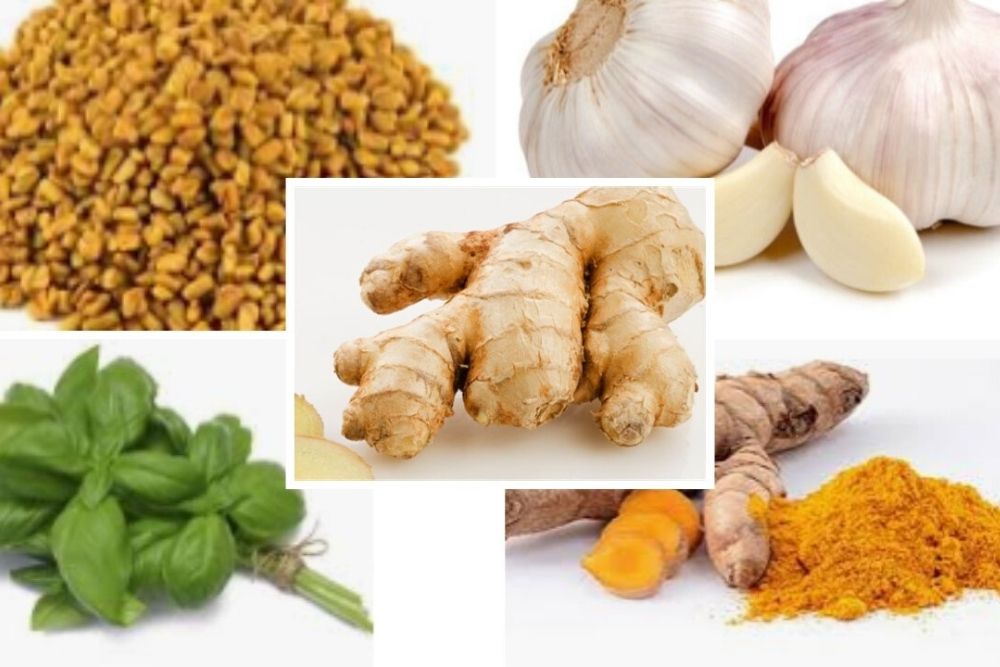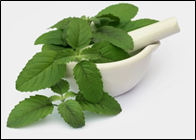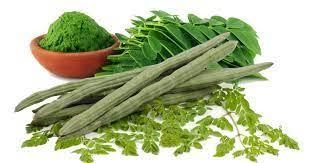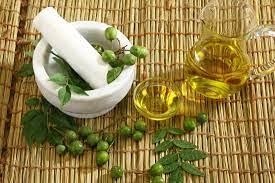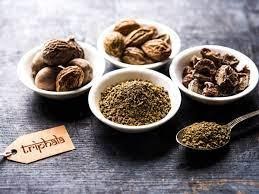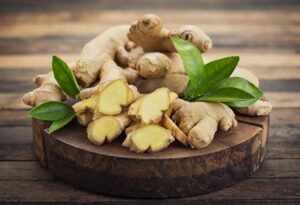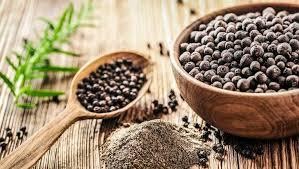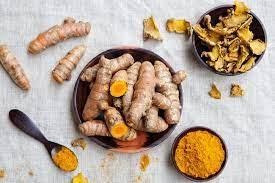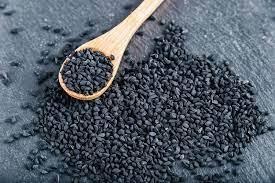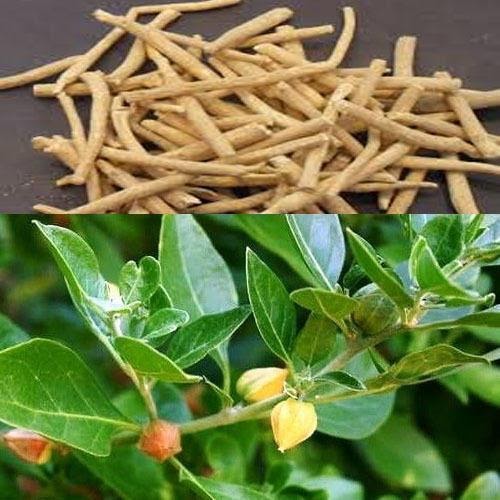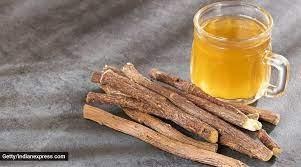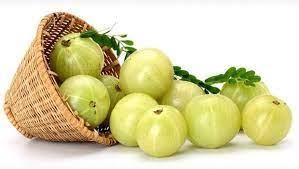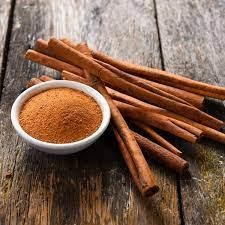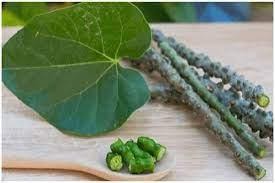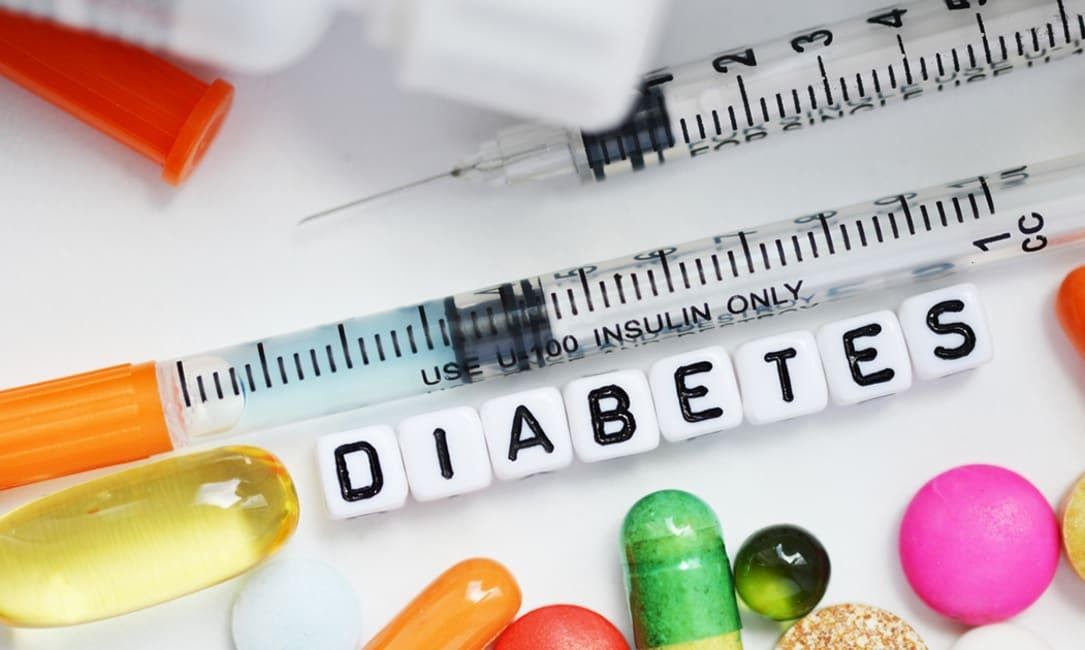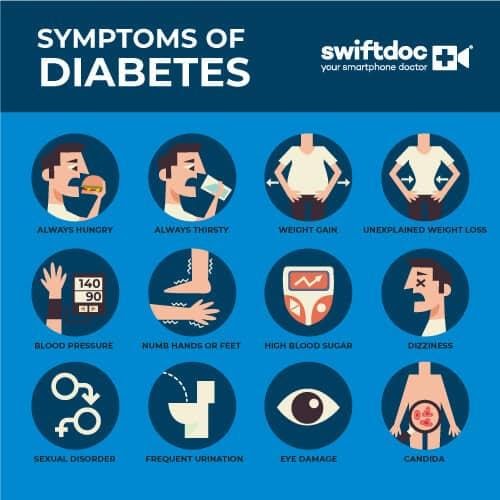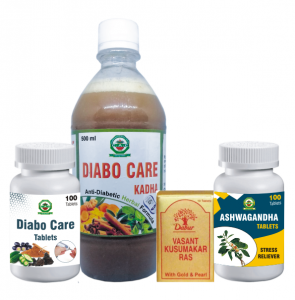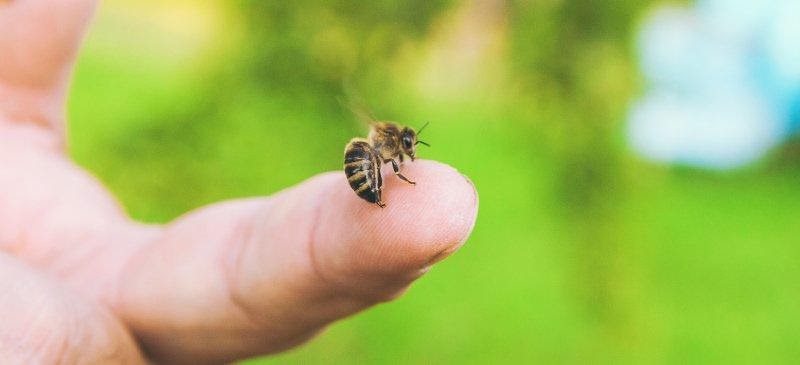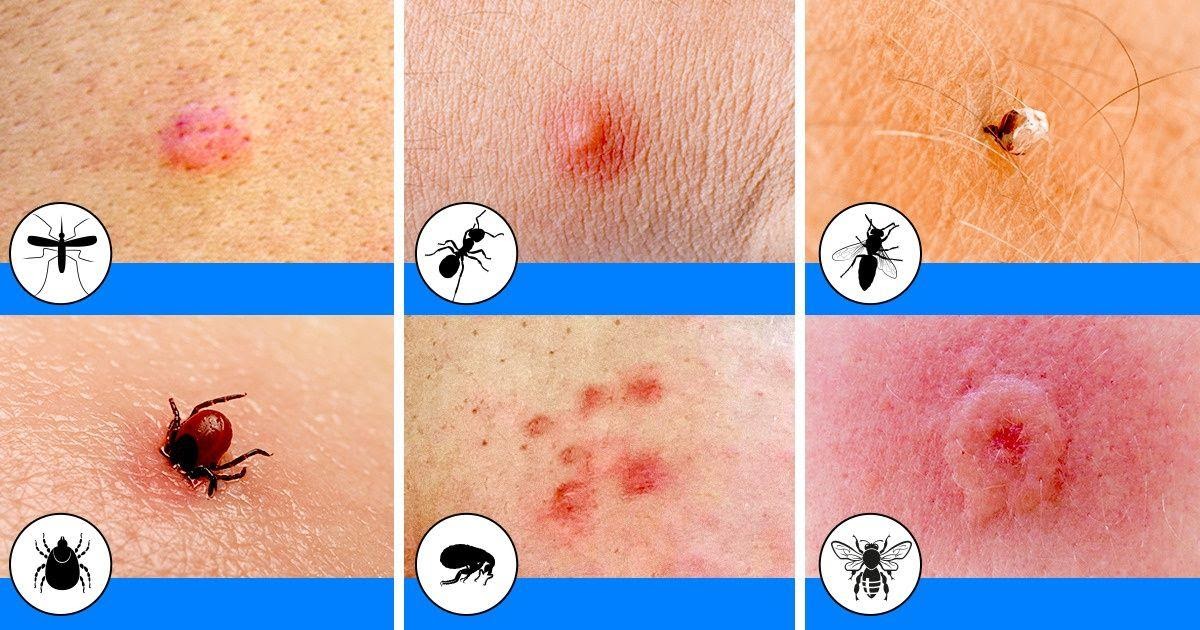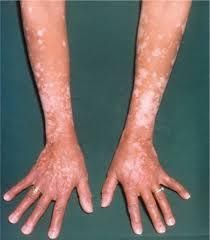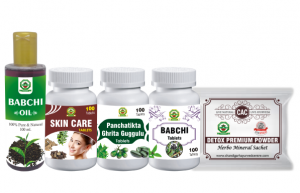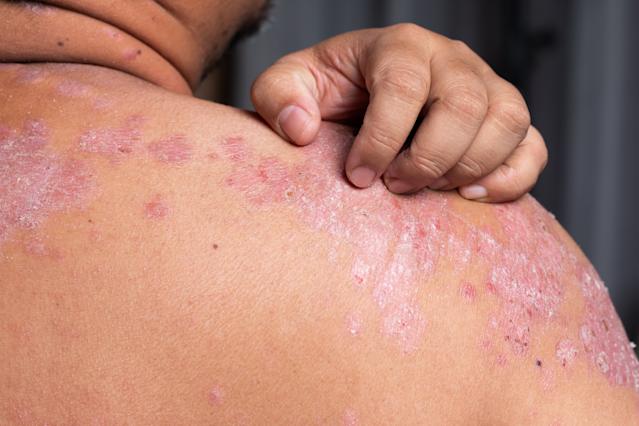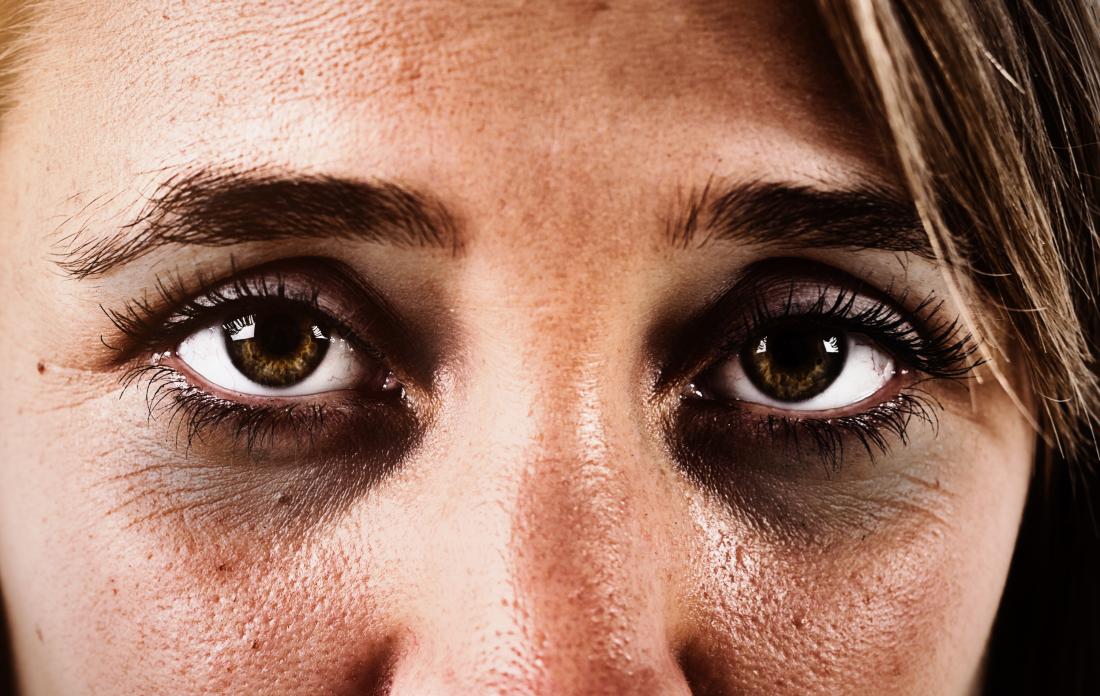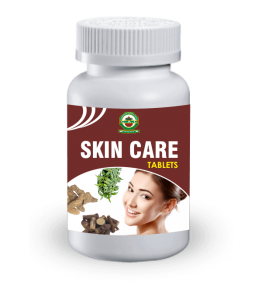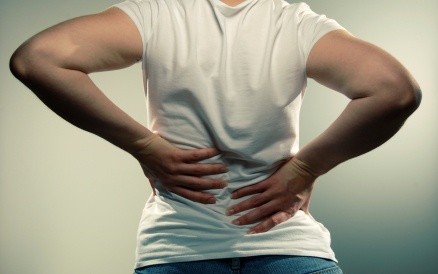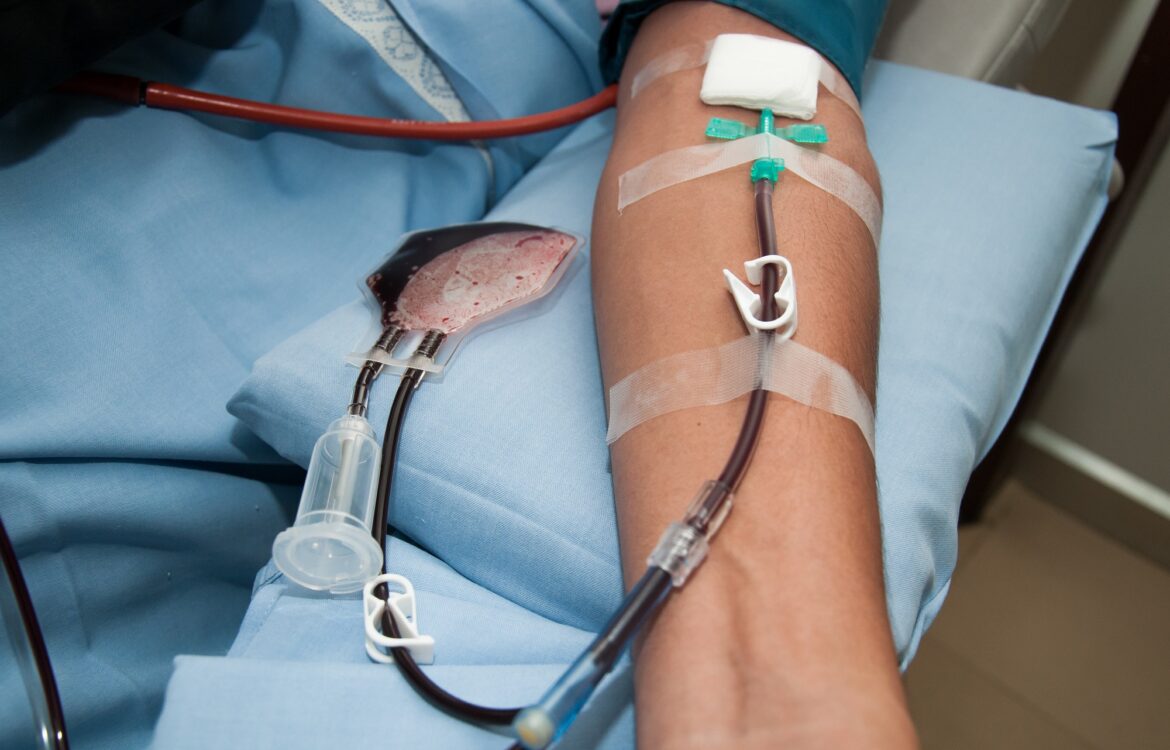Author Archives: Dr. Vaidya Karanvir Singh
IMMUNITY BOOSTING HERBS FOR COVID
- April 27, 2021
- Posted by Dr. Vaidya Karanvir Singh
- 0 Comment(s)
IMMUNITY BOOSTING HERBS FOR COVID
The vital essence of all body dhatus/tissues is called “Ojas.” According to principles of Ayurveda, Ojas is responsible for the overall health, immunity and intelligence and thought-process of humans. According to the concept of Immunity – Vyadhikshamatva or Bala or Ojas, the body’s resistance towards diseases is not only important for disease prevention but also for speedy recovery from illness.
Through ancient times, Ayurvedacharyas have promoted the use of Rasayana (Rejuvenation therapy) to enhance the Ojas. Rasayanas are rejuvenating agents that produce resistance against diseases, both physically and mentally, therefore improving overall health.
Ayurvedic herbs are known for their several health benefits. They are anti-oxidants, immunomodulators, anti-microbials, anti-inflammatory, aid in digestion and list can go on and on. Below are some commonly described immunity boosters in Ayurveda :
TULASI
Tulsi is another wonder herb that is promoted so much by Ayurveda. This aromatic leaf can be your primary line of defense against COVID-19. Tulsi or holy basil is a powerful germicide. Because of its phytochemical and antioxidant properties. It can effectively locate the viruses and bacteria the moment they enter your body and destroys them.
You can simply chew a few leaves first thing in the morning. You can also add a few drops of water boiled with tulsi leaves into your food or you can make herbal tea with its leaves and drink it.
MORINGA
Moringa(drumstick tree) is a herb that can ward off many health complications. It is called MIRACLE TREE for a reason. During the COVID-19 pandemic, it should be your go-to herb for immunity strengthening.
So you must be thinking makes moringa such a powerful immunity booster? So, here’s your answer, It contains 7 times more Vitamin C than even oranges. Vitamin C is the chief nutrient that our body need to build strong disease resistance or immunity.
This isn’t all, moringa also contains many other vital nutrients that strengthen your cells, tissues, muscles and speeds up healing in our body. So, start consuming moringa for its high levels of potassium, iron, calcium and amino acids
NEEM
Since ancient times, neem has been respected and widely used as an immunity booster. It is known to be very effective in keeping the body safe from attacks by harmful pathogens, thanks to its anti-viral, anti-fungal and anti-bacterial properties.
Neem detoxifies the blood and keeps it clean, by flushing away toxins and thus, strengthening the immunity.
TRIPHALA
Triphala contains the antioxidant properties of three fruits- haritaki, bibhitaki and amlaki. It is enriched with Vitamin C and Vitamin A, both of which strengthen your immunity. So, start your day with Triphala.
You can just drink triphala juice or have a teaspoon of its powder with lukewarm water.
GINGER
Ginger has been known to an age-old remedy for flu and the common cold. It can be very effective against COVID-19 symptoms. It contains gingerol – an antioxidant that has the abilities to boost our immune system and kill viruses. Ginger is specifically good in preventing respiratory tract infections. Add ginger to your meals or you can also have it raw or just make herbal tea with it.
GARLIC
Just like ginger, garlic also protects you from coronavirus by enhancing your immunity. It contains allicin – a plant compound that acts as a germicide. So, remember to include garlic in your daily diet. You can consume it raw or partially cooked.
BLACK PEPPER
It has antioxidant, anti inflammatory and bronchodialator properties. Cold, Cough, breathing difficulties are normal respiratory problems that can be cured by consuming black pepper. Just add a pinch of black pepper to some green tea and you’ll see the difference yourself. Also, you can add a pinch of black pepper and a pinch of turmeric in milk and cook it for sometimes and consume it. It acts a wonderful immunity enhancer and prevents respiratory infections.
You can also consume pepper powder with honey.
TURMERIC
Do you remember the times when your grandmother used to say you need to consume turmeric for your health? Guess what, she was right. Turmeric contains curcumin a phytochemical that removes toxins from the body and strengthens the immune system to fight off viruses and bacteria. Add an extra dash of turmeric to your meals or consume it by cooking with milk.
BLACK CUMIN
Black cumin extracts has the abilities to keep you safe from a range of viruses and bacteria that attack our immune system. Both black cumin seeds and oil have antioxidant properties and help flush out free radicals that weaken the immunity.
ASHWAGANDHA
Ashwagandha is an adaptogen, which means it is capable of decreasing stress levels. Stress lowers your immune response and makes the body vulnerable to infections, be it viral or bacterial. Consume ashwagandha during this pandemic to reduce the risk of contracting the coronavirus infection.
All parts of the plant can be consumed, like leaves, roots, bark, fruit, and seeds, for their medicinal properties. But the root is most commonly used part. This herb has traditionally been prescribed to strengthen immunity post any illness. Ashwagandha plant has strong anti-inflammatory action that helps in auto immune diseases like RA and skin conditions. It improves brain cell function, anxiety and depression. It also refreshes the body, relieving fatigue. It should ideally be consumed with warm sweetened milk.
MULETHI
Liquorice or yashtimadhu, also known commonly as mulethi is an excellent home remedy for a number of disorders including cough and cold. According to Ayurveda, mulethi is sweet in taste, is effective in treating vata disorders. Glycyrrhizin – a saponin found in mulethi has anti-microbial action. Use the powdered root with honey and ghee to improve immunity and fight COVID. It is a natural revitaliser and anti-ageing agent.
AMLA
It is perhaps one of the richest sources of vitamin C and is perfect for the overall immunity enhancing, as it can revitalize and rejuvenate the body systems. Amla is cooling in nature and can help remove excess body heat, thus ofte prescribed in pitta dosha conditions. It can prove to be very effective in symptoms in COVID which comes due to involvement of multiple systems, Like Nausea, vomiting, diarrhea, involvement of gastro-intestinal tract.
Amla is also known to stimulate regeneration of red blood cells and help improve haemoglobin content in body. It has anti inflammatory properties too.
It’s best to consume amla in raw form. Amla powder can also be consumed by mixing with honey. Chyawanprash is a well-known Ayurvedic formulation which has Amla in it as main ingredient, that can be consumed to reduce mental and physical fatigue and boost immunity to fight COVID.
CINNAMON
Cinnamon is a potent immunity-boosting herbs in Ayurveda. It’s filled with antioxidants and inflammatory properties to fight off Winter colds and is an amazing immunity booster. It also prevents blood platelet from clumping, destroys inflammatory agents and controls blood sugar.
GILOY
Tinospora cordifolia commonly known as ‘Guduchi’ or ‘Amrita’, is a plant which had been used from centuries for its medicinal values. It has so many properties like, it’s hypolipidemic, hypoglycemic, antibacterial, anti-inflammatory, ANTIOXIDANT, antiosteoporotic, hepatoprotective, antiobesity, anticarcinogenic and antimutagenic.
1,4- α-D-glucan, the main chemical constituent of giloy stimulate natural killer cells, B cells, and T cells with simultaneous production of various immune-stimulatory cytokines. Studies have proven its abilities to increase the white blood cell (WBC) counts, bone marrow cellularity, serum Ig concentrations which further validates the immunomodulatory potential of GILOY.
The things you need to improve your immunity are all within your reach. Consume these herbs and stay home to beat coronavirus!
DIABETES
- April 26, 2021
- Posted by Dr. Vaidya Karanvir Singh
- 0 Comment(s)
DEFINATION:-
Diabetes is a metabolic disorder that causes high blood glucose. The Insulin Hormone transfer sugar from the blood into body cells to use for energy or be stored. Due to the diabetes, the body doesn’t make enough insulin in the pancreatic gland. Uncontrolled Blood glucose levels can damage the nerves, eyes, kidneys, and other organs of the body.
TYPES OF DIABETES:-
There are a few different types of diabetes are mentioned below:-
- TYPE 1 DIABETES:- This is an Autoimmune Disorder. The immune system attacks and destroys the pancreatic cells, the gland where insulin is made. The 10% Patients are suffering from this type of Diabetes.
- TYPE 2 DIABETES:- This type of Diabetes occurs when the body becomes resistant to Insulin and glucose builds up in the blood.
This occurs when the blood sugar levels is higher than the normal levels.
- GESTATIONAL DIABETES:- This is high blood glucose levels during pregnancy. This Diabetes is caused due to Insulin-blocking hormones produced by the placenta.
- DIABETES INSIPIDUS:- This is very rare condition in which the Kidney remove too much fluid from the body.
SIGN AND SYMPTOMS OF DIABETES:-
The Symptoms of Diabetes caused by rising blood Glucose levels. These symptoms are mentioned below:-
TYPE 1 DIABETES SYMPTOMS:-
- Polyphagia- Extreme Hunger
- Polydipsia:- Increased Thirst
- Poly Urea:- Frequent Urination
- Excessive weight loss
- Weak Eyesight and blurry vision
- Tiredness
- Mood Swings
TYPE 2 DIABETES SYMPTOMS:-
- Polyphagia- Increased hunger
- Polydipsia- Increased thirst
- Polyuria- Increased urination
- Blurry vision
- Fatigue and tiredness
- Sores are slow to heal in this condition
- Recurrent infections may occurs. This is due to elevated glucose levels.
GESTATIONAL DIABETES SYMPTOMS:-
- The condition detected during a routine blood glucose test or oral glucose tolerance. The test is usually performed between the 24th and 28th weeks of pregnancy.
- In some cases, a woman with gestational diabetes may have the symptoms of Polydipsia or frequent urination.
SYPTOMES IN MEN
- Decreased sex drive
- ED (Erectile Dysfunction)
- Poor Muscle strength
SYMPTOMS IN WOMEN
- Recurrent Urinary Tract Infections
- Dry Skin
- Itchy Skin
GENERAL SYMPTOMS OF DIABETES:-
The general symptoms of diabetes are following:-
- Polyphagia:- In this condition there is increase in hunger of the patient
- Polydipsia:- In this condition there is Increased thirst
- Loss of Weight
- Frequent urination:- This may be due to recurrent UTI caused by increased blood glucose levels in the blood.
- Blurry vision
- Weak Eyesight
- Excessive Fatigue
- Sores that do not heal
CAUSES OF DIABETES
There are different causes of Diabetes are mentioned below according to its type:-
CAUSES OF TYPE 1 DIABETES:-
- Weak immune system attacks and destroys beta cells of pancreas that producing insulin in the pancreas.
- Genetic cause:- Genes may play a role in some patients.
- Virus may also responsible for weak immune system and causes Diabetes.
CAUSES OF TYPE 2 DIABETES:-
- Genetic Cause:- This condition runs in the families
- Lifestyle Factors
- Obesity or Overweight
- Extra fat in Belly
CAUSES OF GESTATIONAL DIABETES:-
- Hormonal changes during pregnancy
- In this condition the placenta produces hormones that make the cells less sensitive to the effects of insulin, in a pregnant woman. This condition can cause high blood glucose during pregnancy.
- Women who are overweight when they get pregnant
- Women who gain too much during their pregnancy.
- Environmental Factors
- Genetic Factors
RISK FACTORS OF DFIABETES:-
There are Certain factors that increase the risk for diabetes.
TYPE 1 DIABETES RISK FACTORS:-
- The patient is more likely to get Type 1 Diabetes when He is a child or a teenager
- If the patient’s Parents or sibling have diabetes, means patient carry certain genes that are linked to the Diabetes disorder.
TYPE 2 DIABETES RISK FACTORS:-
- Obesity or Overweight
- Age Factor:- If patient’s age is 45 or older than that.
- Genetic Factor:- When patient have a Parent or sibling with the condition of Diabetes.
- Laziness:- When patient is not physically active
- If patient have past history of gestational diabetes
- If patient has prediabetes history
- High blood pressure
- High Cholesterol Levels
- High Triglycerides
GASTATIONAL DIABETES RISK FACTORS:-
The risk for gestational diabetes increases, the causes are mentioned below:-
- Obesity are overweight, it’s a major factor which is responsible for gestational diabetes.
- When patient get over age 25
- Past history of gestational diabetes during pregnancy
- When patient given birth to a baby weighing more than 9 pounds.
- When patient have family history of type 2 diabetes
- If patient have PCOD/PCOS (Polycystic Ovarian Disease/Syndrome)
- Preexisting medical conditions
- Environmental Factors
COMPLICATIONS OF DIABETES:-
There is some complications caused due to Diabetes are mentioned below:-
- High blood Glucose levels in blood can damages the organs and tissues throughout the body.
- The higher blood sugar levels, is the greater risk for many complications in the body.
- High Blood Glucose levels can cause heart Diseases
- Heart attack
- Stroke
- Neuropathy
- Nephropathy
- Retinopathy
- Vision Loss
- Hearing Loss
- Sores that does not heal
- Foot Damage due to infections
- Bacterial and Fungal infections of skin
- Depression
- Dementia
COMPLICATIONS OF GASTATIONAL DIABETES:-
- Uncontrolled Gestational diabetes can cause many problems that affect both the mother and baby. The complications are mentioned below:-
- Premature Birth of the baby
- Baby’s weight is higher than normal weight
- Increased risk for type 2 diabetes later in life of a baby
- Low blood glucose levels
- Jaundice
- Preeclampsia:- High blood pressure complication occurs to the mother
- Mother may require Cesarean Section, due to the overweight of the baby.
- The mother’s risk of gestational diabetes are increased in future pregnancies.
- Diabetes can lead to major medical complications.
DIABETES ACCORDING TO AYURVEDA
CHANDIGARH AYURVEDIC CENTER provides Purely Herbal and effective ayurvedic formulation for the treatment of Diabetes. CAC provides The DIABETES CARE KIT. This Herbal Kit basically controls the blood glucose levels in the blood. Diabetes Care Kit also helps to balance the Three Doshas of the body. This Kit mainly controls the Kapha Dosha (Increased Kapha Dosha is responsible for Diabetes). The Diabetes Care Kit contains various Herbal Medicines which helps to reduce Diabetes symptoms. It has Natural antioxidant, Anti microbial and Immuno modulator properties. This Herbal kit cure Diabetes without any side effects.
The ingredients of this Kit are mentioned below:-
- Dalchini
- Haldi
- Kalizeeri
- Aswhwagandha
- Tulsi
DIABETES MELLITUS CARE KIT
The Diabetes Care Kit products mentioned below in dfetails:-
VASANT KUSUMAKAR RASA:
Vasant Kusumakar Ras is an ayurvedic herbal medicine contains following ingridients:-
- Praval Pishti
- Ras Sindoor
- Mukta Pishti
- Abhrak Bhasma
- Swarna Bhasma
- Raupya Bhasma
- Loha Bhasma
- Naga Bhasma
- Vanga Bhasma
- Vasaka (Adhatoda Vasica)
- Haldi (Curcuma Longa)
- Ikshu (Saccharum Officinarum)
- Shatavari (Asparagus Racemosa)
USES OF VASANT KUSUMAKAR RAS:-
- Anti-hyperglycaemic Properties
- It contains aphrodisiac and cardioprotective agent
- This contains natural ingredients such asIt, This is beneficial for diabetes mellitus
- It is effective for normalizing and stabilizing the blood glucose level
- It also provides effective result in urinary disorders
- This Used in nervous disorders
- It gave relief in geriatric diseases.
Recommended Dosage: One tablet twice a day with normal water.
ASHWAGANDHA TABLET:-
These tablet are pure Herbal preparation which has pure extract of Ashwagandha. Ashwagandha has anti-diabetic, antioxidant, anti-inflammatory, anti-cancer, anti-stress properties. Ashwagandha also helps to regulates glucose metabolism and cholesterol.
USES OF ASHWAGANDHA TABLET:-
- Ashwagandha is used for arthritis
- Anxiety
- Bipolar disorder
- Insomnia
- Tumors
- Tuberculosis
- Asthma
- Leukoderma
- Bronchitis
- Backache
- Fibromyalgia
- Menstrual problems
- Chronic liver disease.
Recommended Dosage: One tablet twice a day with normal water.
DIABO CARE TABLET:-
These tablets are pure Herbal formulation.
Diabo care tablets contains herbal ingredients such as:-
- Karela
- Jamun
- Ashwagandgha
- Gurmur
- Shuddha Shilajeet
- Neem
USES OF DIABOCARE TABLETS:-
- This is used to treat the Diabetes, by reducing the level of glycosuria.
- It also contains Polypeptide-p that has shown to control diabetes naturally.
- This tablet also maintain blood glucose levels
Recommended Dosage: Take One tablet twice daily.
DIABO CARE KADHA:-
Diabo care kadha contains following ingredients:-
- Dalchini (Cinnamomum zeylanicum)
- Methi dana (Trigonella foenum- graecum)
- Ashwagandha (Withania somnifera)
- Haldi (Curcuma longa)
USES OF Diabo care kadha:-
- This increases the uptake of glucose by the cells
- Regenerate lipid mechanism
- Preventing micro-vascular damage
- Prevents Diabetic retinopathy.
- It is also very helpful in the burning of palms and soles, wounds that take time to heal
- It cures skin infections
- It helps in unexplained extreme fatigue
Recommended Dosage: 20 ml Kadha twice a day with normal water.
PANCHAKARMA TREATMENT OF DIABETES MELLITUS
In Ayurveda, Panchakarma procedures Detoxify and purify and the body in a natural way. Abhyanga, Swedan, Basti and Virechana Panchakarma Treatments are beneficial in the Diabetes Mellitus.
CHANDIGARH AYURVED CENTRE provides you the best Doctors which can cure Diabetes from its root and maintain the work of the pancreas.
Abhyanga and Swedan Panchkarma Therapy:-
- It helps to low the level of stress.
- It lover blood sugar levels.
- Abhyanga is useful in relieving the Anxiety
- It helps in relaxing the muscles
- It helps to improve the circulation which further causes increased glucose absorption and the level of insulin required for impaired glucose levels also decreased.
Swedan Panchkarma Therapy:-
- This therapy opens the pores and cleanses the system through the skin
- It also helps to remove the toxins excreted through sweat.
Basti Panchkarma Therapy:-
- Basti karma concentrates on the elimination of toxins of the body through the rectum.
- The treatment involves the introduction of Medicinal substances, such as medicated oil and decoctions in a liquid medium into the anal region of the patient by using a rubber catheter under the supervision of an expert ayurvedic practician.
Virechana for Diabetes:-
- It is a medicated purgation therapy that removes toxins from the body that are accumulated in the liver and gallbladder.
- In this therapy the Doshas are removed in the form of feces through the rectum.
- It completely cleanses the gastro intestinal tract.
Healthy Tips and Diet for Diabetes Mellitus Patients:-
- Do daily exercise at least for 30-60 minutes.
- Increase the use of wheat, barely, mudga, and roasted chana in the diet.
- Limit the use of potato, oily foods, rice, milk, and milk products.
- Avoid liquor consumption and tobacco.
- Avoid Sweets
- Avoid Nuts
- Take Cinnamon, It helps in dropping the blood sugar level and reducing the risk of developing type 2 diabetes.
- Take Garlic, It has the properties of lowering cholesterol and blood sugar level.
- Drinking water before eating. It helps to increase the sensitivity of insulin and reducing the blood glucose levels in pre-diabetes patients.
- Regular monitoring of blood glucose level and medical checkup.
- Eye examination annually.
- Foot examination twice in a day.
- Glycosylated hemoglobin (HbA1c) test twice in a year.
HOW TO GAIN WEIGHT NATURALLY
- April 23, 2021
- Posted by Dr. Vaidya Karanvir Singh
- 0 Comment(s)
HEALTHY LIFESTYLE AND HEALTHY DIET
The Dosha imbalance in the body happens due to unhealthy life standards, unhealthy diet, lack of exercise and low immunity and excessive use of chemical-based supplements or chemical based treatments for weight gain and to treat other health problems. But you can stay healthy or gain weight by following health tips.
Supplements alone don’t work. They’re a boost to your existing diet. If you eat junk and processed foods a lot, you won’t see good results. But if you’re open to making those changes, here are some tips are complementary to Ayurvedic medicine for weight gain:
- Include plant-based diet in your day to day meals, like soybeans, green vegetables, fresh fruits, fruit juice and vegetable smoothies.
- Avoid intake of Non-vegetarian food. Avoid excessive alcohol consumption and cigarette smoking. Include rice, beans, black gram, ghee, and wheat in your daily diet plan.
- Add some natural spices like ginger, cumin, black pepper, carom seeds, turm eric, Choti Elaichi, Badi Elaichi, Laung(cloves), Saunf(Anise) in your meals to improve your appetite.
- Get a good night’s sleep. Make sure you have at least 7-8 hours of undisturbed and sound sleep. Our metabolism goes out of order if we are suffering from constant insomnia but with a little bit of cow’s milk and turmeric powder cooked in it, you’ll doze off in no time. Before going to bed during sleeping time, avoid interruptions like using mobile phones, watching Tv etc. You can try massaging your feet before bed.
- Eat and enjoy your food in a noise-free place or distraction free place so that you can focus completely on your food.
- Eat your meal at average speed because too fast and too slow eating affects your metabolism and lowers the body’s rate of nutrient absorption.
- Avoid drinking water 30 minutes before meals and after having a meal.
- To strengthen your muscles and bones, massage your body with sesame oil. It improves whole body’s blood circulation.
- Try and keep your body toxin free. So, stay always hydrated throughout the day.
- Exercise regularly, it regulates our metabolism and enhances digestive fire you’ll eat more and gain weight.
- Drinking some lukewarm water with lemon juice after every meal. This will keep you hydrated as well as it will boost your digestion, and eventually increase your weight.
- Stress, anxiety, and depression can cause weight loss. Try to practice yoga and pranayama and learn how to relax and avoid processed foods or junk food. Instead, you can use instead different types of Ayurvedic weight gain tonics and powders since those are healthier options.
- If you’re eating meat and dairy, go for grass-fed lean meats and organic dairy products. Cook your meat portions in ghee and add some black pepper, salt, and spices. It will make the dish tastier and also will enhance your digestion.
- Add soy to your diet. Soy is a rich source of protein and is known to increase body weight.
- Don’t skip drinking fruit juices. Avoid the packed ones or canned. Even better if you have whole fruit.
- Spices like cinnamon, ginger, and cloves and herbs like oregano and parsley are known to increase appetite and promote weight gain.
- Eat mindfully. Yes, this is the most important tip. Whatever you eat, chew well so that it is properly digested. Don’t just swallow after a few bites because that won’t do you any good and won’t be used up by the body.
YOGA AND MEDITATION
Yoga and Meditation play a very important role in gaining weight naturally. Yoga and meditation manage your stress level and calms the mind down, hence balances the all three doshas of the body.
Pranayam is an essential to remove the harmful toxins from the body which are responsible for imbalance of all three doshas.
DETOXIFICATION BY PANCHKARMA THERAPIES
In Ayurveda, for every disease treatment, there are panchkarma therapies for detoxification is a must.
To get the best results from oral medications, detoxification is done prior to it. These therapies include : Vamanam(Emesis), Virechanam(Purgation), Anuvasanam and Niruha basti(Enema).
NATURAL HERBS USED FOR WEIGHT GAIN
Numerous kinds of spices and herbs are useful to GAIN WEIGHT NATURALLY.
ASHWAGANDHA
Ashwagandha Is a natural nourishing herb that nourishes body cells and is a good sleep inducing herb. It also corrects hormonal imbalance and expells toxins out from the body.
- It has pungent smell, the avaleham formulation made from Ashwagandha has innumerable health benefits.
- It is rich in adaptogenic, antimicrobial, anti-inflammatory properties.
- The formulations of Withania somnifera plant acts as a sport supplement and offers strength, muscle mass, endurance and stamina.
- Apart from Ashwagandha, it’s avaleha is also enriched with the benefits of cardamom, milk, long pepper, clove, bhallataka, saffron, mace, patala, walnut, water chestnut, nutmeg, bamboo mannaloha bhasma, vanga bhasma, abhrak bhasma, and naga bhasma.
- It helps to reduce stress, anxiety and treat diseases like arthritis, fibromyalgia, insomnia, heart problems, boost immunity and is extremely beneficial for loss of libido in men.
DOSE
Avaleha: 5-10 grams with milk. 2 times a day after meals or as suggested by the physician.
Ashwagandha powder : 300 -500 mg per day by mixing with warm water or milk.
MULETHI
Low immunity is one of the many responsible factors behind weight loss. Mulethi helps in this condition
- Mulethi boosts your immune system. It protects the lining of alimentary canals, improves digestion and promotes proper absorption of nutrients.
- Mulethi or Licorice is a quintessential ingredient in case of weight gain. The root of this plant has been used for curing a no. of ailments since a very very long time, be it strengthening the immunity, enhancing overall stamina and strength, the churna of the yashtimadhu roots does it all and works on overall health.
- The rich amount of of herbal ingredients in this ayurvedic formulation compensates for the lack of vitamins and minerals from the daily diet and therefore, guarantees increase in weight and muscle mass on regular consumption.
POWDER DOSE – 1-3 grams for adults, twice daily with lukewarm water or milk, before meals or as advised by the ayurvedic physician.
SHATAVARI
- Shatavari is a pure and harmonious herb. Its in nature is to calm your mind and reduce tension and stress. It nourishes the body cells and provides strength.
- The herb makes sure our entire body is hydrated, improves digestion, and boosts the immune system.
- It is named as the “Queen of Herbs”. Shatavari is super beneficial in regulating hormones and increasing body weight in women.
- This potent ‘female-friendly herb’ hold high significance in bolstering immunity, boosting digestion, treating anorexia nervosa, enhancing libido, promoting lactation and preventing stress and anxiety.
- By normalizing the Pitta, Shatavari makes sure to keep optimal body fluids, and therefore helps in weight gain.
Powder Dose: 1 fourth to half teaspoon with honey or milk, twice a day or as directed by the physician
TRIPHALA
Triphala improve digestion and flushes out the toxins from the body.
CUMIN
Cumin gives relief from bloating, gas, and acidity problems. Aids in digestion and proper assimilation of food. Hence, weight gain.
TURMERIC
Turmeric is one of the antioxidant rich herbs in Ayurveda. It helps in balancing the body tridoshas doshas and protects you from various health complications which can lead to weight loss.
CARDAMON
Cardamom is an antioxidant-rich herb in Ayurveda that helps to balance Vata and pitta dosha domination. Helps in weight gain.
ALFALFA
It’s a flowering plant and its consumption makes the body healthy and strong. It improves your metabolism and promotes the healthy weight gain. This is one of the best Ayurvedic herbs for weight gain.
CUSTARD APPLE
It boosts the immune system and strengthens the bones and muscles. Hence helps building muscle mass.
CHYAWANPRASH
Chyawanprash needs no introduction because it is one of the most used dietary supplements in almost all Indian households.
- It is rich with powerful herbs, spices, minerals and plenty of vitamin C. This supplement extensively helps in the prevention of a variety of health ailments. It has tremendous immunomodulatory effects and rejuvenative and revitalizing properties.
- The herbal ingredients in this sweet-sour avaleha formulation includes Ashwagandha, Tulasi, elaichi, Safed Chandana, Amlaki, Neem, Pippali, Arjun, Brahmi, Kesar, Ghrita and Shahad.
- This supplement is not only beneficial for bolstering immunity but also help in weight gain, improves digestion, increase bone strength and density, and strengthen muscles.
- It is also known to improve skin health, and enhance fertility and promotes libido in women.
BADAM PAK
- As the name Badam paka signifies, this formulation is enriched with the nutrition of nuts. It has almond, pistachio, clove, ghee, cardamom, jaiphal, saffron, cinnamon, and swarna bhasma,
- This sweet avaleha preparation plays a vital role in providing the body with nourishment, strength and stamina. It facilitate weight gain, and energizes the body, but it also prevents stress, mental fatigue, microbial infections, and constipation.
Adult Dose : 10 gm with warm milk twice a day or as suggested by the ayurvedic physician.
INSECT BITES
- April 23, 2021
- Posted by Dr. Vaidya Karanvir Singh
- 0 Comment(s)
WHAT IS AN INSECT BITES?
Insect bite can be listed under the puncture wounds. It is caused by an insect possibly in self-defence or when looking to feed.
They typically inject the Formic acid which may lead to immediate skin reactions like itching, Redness, pain swelling etc.
AYURVEDIC ASPECT OF INSECT BITE
In Ayurveda, Insect bite is classified under the Agantuja Vrana(Wound caused by external factors) or Viddha Vrana or Punctured wound.
Insect bite is also known as “Kita Damsha”
Atreya said something about the Kita or insects- They are born from the putrefied urine, feces, semen, egg, and cadavers of snakes.
The division of insects based on doshic characteristics into 4 types-
- Vata- in this type of insect bite the sensation of prickling pain is greatly increased.
- Pitta- In this type of insect bite there is less exudation but more burning sensation, redness, spreading of symptoms, and its appearance is like a ripe Pilu Fruit or kharjūra fruit(Phoenix dactylifera).
- Kapha- In this type there is mild pain, and the swelling appears like a ripen Udumbara fruit (Ficus racemosa).
- Sannipattika- In this type there is copious exudate, presence of all of the previous symptoms or mixed symptomatology, and this type is very difficult to treat.
Ancient Ayurveda Treatment
- For the One dohik involvement i.e. Vata, Pitta, and Kapha – Acharya Atreya recommends the 3 kinds of doshic treatments- fomentation, the application of medicines, and washing the lesion (Exception- instances of loss of consciousness, ulceration of the wounds, or infection.
- Ghee mixed with equal amounts of trivruta (Operculina turpenthum) and tanduliyaka( the Sanskrit term for Amaranthus spinosus, commonly known as the spiny amaranth, prickly amaranth or thorny amaranth) should be consumed.
- Human hair can be used to fumigate all types of bite/sting.
One should undergo purificatory therapy and after that the patient should apply a paste made of the milky sap of tree bark at the site of lesion.
- The application of a paste of mukta (pearls)- It is considered the best cure for swelling, pricking pain, burning, and fever
- Dasanga agada– Acharya Kashyapa listed the herbal formula which is beneficial for insect bites. It consists of combination of the herbs like Vacha(Acorus calamus), Hingu, Vidanga(Embilia ribes) , saindhava, gajapippali, patha, prativaisa, and vyosa, which are formed into a paste and then rolled into pills. “This formulation cures all kinds of insect poisons.”
- The seeds of sirisa(Albizzia lebbeck) soaked and macerated for 3 times in the milky sap of Arka and then mixed with Pippali(Long pepper) powder is the Agada or antidote that destroys the poison of insects.
MOST COMMON INSECT BITES
- Mosquito
- Ant
- Bee
- Spider
- Hornets
- Wasps
- Mites
- Fleas
SIGNS AND SYMPTOMS-
- Pain
- Redness
- Swelling
- Inflammation
- Blisters
- Itching
- Irritation
- Numbness
- Tingling Sensation
- Rashes and burning
- Cramps
- Stiffness
- Breathlessness
- Nausea
HOME REMEDIES-
- For redness and pain- apply ice packs on the affected part which helps to relieve from redness and pain.
- In case of Swelling- Clean the affected area of the bite by using a soap and adequate amount of water. Then immediately, apply ice pack as it may reduce the swelling. Avoid scratching the bite or the area around it as it in order to reduce the chances of infection in Future.
- Insect Stingers- The insects that can leave stingers on your skin i.e. Honeybees and yellow jackets.
- Firstly, remove the stinger from a card or something similar but it is advised not to pinch the stinger as it might spread more venom.
- For redness, pain swelling follow the above points in addition some points are listed below-
- Allium cepa (Onion)- Application of Sliced onion on the affected site by gently tapping and holding.Time Duration- 1hour
- Baking soda mixed with water may help to neutralize Venom of bee and reduces pain, itching and swelling. Time duration- 15minute and repeat it if required.
- Honey- Apply to the affected site cover with a loose bandage keep it for an hour.
- Apple cider Vinegar- It is believed that it can neutralize the Venom. Use diluted Apple Cider Vinegar to the affected site for at least 15minutes.
- To remove the swelling, elevate the area of the bite if possible.
- A mixture of baking soda and water can be applied over the affected site in order to avoid pain and swelling.
- Aloe Vera, basil leaves and peppermint due to their antiseptic properties, considered as a great remedy to treat insect bites.
- Aloe Vera- Local application Aloe Vera gel on the affected area. Peppermint leaves- Application of crushed leaves or peppermint oil provides a cooling sensation and reduces the itching. Time Duration-15 minutes
- Basil leaves (2 table- spoons Crushed) and Turmeric Powder (2 table- spoons) mix them well together and apply on the affected site. It helps to reduce itching.
- Application of Mustard oil and Neem oil is a natural mosquito repellent.
IS THERE NEED TO SEEK FOR A MEDICAL TREATMENT?
- If the insect bite is close to mouth and throat.
- If the symptoms are getting worse and not treated in 2-3 days.
- Increasing pain and swelling along with Pus collection at the site of the insect bite.
- If the area of bite is large i.e. around 10 cms and there is more redness and swelling.
- If there is Fever of Flu-like symptoms persists.
CAC SPECIAL CARE PRODUCTS FOR INSECT BITE-
THESE CAN BE APPLIED LOCALLY IN ORDER TO REMOVE THE RASHES AFTER INSECT BITES –
- Aloe Vera Gulab Gel
- Aloe Vera gel enriched with almond oil
- Jatyadi Ghrit lepa
- CAC Neem Soap
- Fullers Earth pack
LEUCODERMA/VITILIGO
- April 23, 2021
- Posted by Dr. Vaidya Karanvir Singh
- 0 Comment(s)
DEFINITION:-
Leucoderma is an autoimmune disorder in which the immune system of the body attacks the healthy cells and starts affecting the body and start affecting the body. In this Disorder, there is loss of Melanin (pigmentation) which leads to whitening of the skin. The White patches on the skin are known as Leucoderma or Vitiligo. This condition is characterized by white patches on the skin that develops as a result of Melanocytes. There is loss of color of skin may affect the parts of the body, including the face, mouth, scalp, hair, eyes, and genitals. This may be more noticeable in patients with dark skin.
CAUSES:-
There are two types of Leucoderma/Vitiligo:-
- Segmental Leukoderma:- The symptoms of segmental leukoderma/Vitiligo affecting one side or segment of the body, start showing at an early stage. This type of disorder progresses for only a few years.
- Non-Segmental Leukoderma:- This type of Leucodermaaffects both sides of the body and it expands with new cycles of pigment loss throughout life. This starts with a short-lived burst of discoloration.
Other Causes of Leucoderma/Vitiligo:-
- Autoimmune condition:- This is a disorder of the immune system.
- Heredity Factors
- Family history.
- Excessive Worry or Stress.
- Severe Sunburn.
- Skin trauma is caused due to contact with chemicals.
- Chronic Gastric Problems
- Liver disorders like Jaundice
- Excessive consumption of infected foodstuffs
- Presence of parasites or worms in the digestive system
- Burns
- Tattoos on the skin
- Allergic factors such as paints, deodorants, or adhesive.
SIGN AND SYMPTOMS:-
- Loss of skin color (Patchy), This commonly appears first on the hands, face, and areas around the body openings like mouth and genitals.
- Premature graying or whitening of the hair on the scalp, eyelashes, eyebrows, or beard
- Loss of color in the tissues that line the inside of the mucous membranes of the nose and mouth.
- Leucoderma may appear at any age, but usually appears before 30 years of age.
- Milky white patches, that gradually grow in size, that’s due to De-pigmentation of the skin.
- Alteration or loss of the color in the retina
- Mood Swings
- Depression
TYPES OF LEUCODERMA/VITILGO:-
- Universal Vitiligo:- This occurs in Nearly all skin surfaces, This type of vitiligo is known as universal vitiligo, In this condition, the discoloration affects nearly all skin surfaces.
- Generalized Vitiligo:- This is the most common type of vitiligo, This is known as generalized vitiligo, In this condition, the discolored patches often progress similarly on corresponding over many parts of the body.
- Segmental Vitiligo:- It appears at a younger age, and it progresses for some years and then it may stop. It affects only one side or part of the body. This type of vitiligo is known as segmental vitiligo.
- Focal (localized) vitiligo:- This affects one or only a few areas of the body. This type is known as Focal (localized) vitiligo.
- Acrofacial vitiligo:- The face and hands are commonly affected. This type of vitiligo is known as acrofacial vitiligo, this affects the skin on the face and hands, and around body openings, such as the eyes, nose, and ears.
It’s difficult to predict how Leucoderma/Vitiligo Disorder will progress. The Pigment loss spreads and eventually involves most of the skin in most cases.
COMPLICATIONS:-
Patients with Leucoderma/vitiligo may be at increased risk of:-
- psychological Distress
- Social Distress
- Sunburn
- Eye Problems
- Loss Of Hearing
ACCORDING TO AYURVEDA:-
The Leucoderma/Vitiligo may compare with the “SHVET KUSTHA”. This is caused due to the imbalance of the Doshas mainly “Pitta dosha” in the body. This aggravated Pitta Dosha causes poor digestion which leads to the accumulation of the ‘Ama’ (Toxins) in the deep tissues of the body, This condition leads to Leucoderma/Vitiligo. The Pitta Dosha is divided into five types; Bhrajak Pitta is one of them, This Pitta is responsible for discoloration of the skin, This is called Shvet kustha. In this case, there is an imbalance state thus the skin starts losing color and white patches are formed. In this condition, there is an imbalance of Rasa Dhatu, Rakta Dhatu, Mansa Dhatu, and Lasika Dhatu.
AYURVEDIC TREATMENT OF LEUCODERMA/VITILIGO
“CHANDIGARH AYURVED CENTRE” facilitates the best Herbal Medicines that is considered useful for the leucoderma/Vitiligo.In CAC the Ayurvedic Doctors provided the complete package of Herbal medicines known as ‘’LEUCODERMA CARE KIT’’, This Kit has proven good results in treating the Leucoderma. “Leucoderma Care Kit” helps in Cleansing the blood and improve the imbalanced body energies, and administrating herbs that help to restore the skin color. CAC has Natural Herbs that help to reduce the leucoderma.
The “leucoderma Care Kit” contains the following products:-
- Tolenorm Oil
- Tolenorm Ointment
- Detox premium powder
- Bakuchi vati
- Panchtiktak Ghrita guggulu
- Yakrit vati
LEUCODERMA CARE KIT
ALL PRODUCTS DESCRIPTION IN DETAILS:-
Detox Premium Powder:-
This mixture contains all herbal medicines which help in the treatment of leucoderma. The Herbal mixture contains the following ingredients like:-Moti pishti, Parwal pishti, Giloy satva, Jahar mohra, Akik pishti, Gandhak rasayan, Tal sindoor. This powder balance all the Tridosha in our body. It is useful in inflamed body parts and brings cooling effects to the body.
Dosage:- One Sachet twice a day with normal water.
Panchatikta Ghrita Guggulu:-
Panchatikta Ghrita Guggulu is an Ayurvedic formulation that helps to balance The Vata Dosha, Pitta Dosha, and Kapha Dosha in our body. It is very beneficial in skin diseases, It also purifies the blood. It is prepared from ingredients like:- Patola (Trichosanthes dioica), Guduchi (Tinospora cordifolia), Vasa (Adhatoda vasica). It provides cooling effects and also reduces inflammationof the body. This Ayurvedic medicine is very useful for managing the skin problems like leucoderma, psoriasis, and eczema. It also helps to eliminate the toxins from the blood.
Dosage:- Two Tablets twice a day with normal water.
Babchi Oil (Psoralea corylifolia ):-
This oil is also known as “Kustanashini” (Vitiligo destroyer) according to Ayurveda, Babci Oil is the most trusted Ayurvedic herbs which are used for skin health and blood purification. Babchi Oil is also used as alternative Herbal Medicine in Pathies like Ayurveda, Siddha, and Homeopathy to treat the various types of skin disorders like leucoderma/Vitiligo, leprosy, lumbago, impotence, bones disorders, psoriasis, and intestinal worms. Babci oil helps to maintain genital health. It is very effective to treat skin infections and lower back pains. CAC Babchi oil is 100% natural Herbal oil, it’s pure of the highest quality. It is safe to use and certified organic oil. Babchi has anti-inflammatory, anti-oxidant, and analgesic properties. This is applied on the skin in leucoderma, this has no side effects. It helps to reduce the pigmentation, white spots on the skin, reduces Urticaria, Skin rashes, and redness.
Dosage:- Apply oil Twice a day on the affected area.
Babchi Tablet (Psoralea Corylifolia):-
This Tablet is an herbal formulation medicine which is used in fungal infection of the nail, provide natural color to skin, Psoriasis, Eczema, Leprosy, skin problems, deafness, bleedings from wounds, insomnia, Leucoderma, also purifies blood and helps to produce healthy melanin pigment (skin pigment that helps healthy skin color) in the body. Bakuchi helps in indigestion and acidity. It has antioxidant, anti-inflammatory, and analgesic properties. It reduces white spots on the skin and reduces skin rashes, pigmentation, redness, and Urticaria.
Dosage:- 1-2 tablets twice a day with normal water
Skin Care tablet:-
Skincare tablet is a Pure Ayurvedic formula of herbo mineral medicines. It helps to maintain the color and texture of the skin. It contains the following herbal medicines like Haridra Khand, Panchnimb churna, Khadir chahal, Chirayta, Mulethi, Chopchini, Gandhak, and Ajmoda, These medicines work very effectively on all types of skin diseases. These tablets contain blood purifying agents. It helps to cool the blood and also detoxifies the blood. This tablet removes stagnant blood and removes obstructions in the blood flow that helps to increase the circulation of the blood in the skin. It reduces the blemishes, removes sun tan, heals the skin problems, and delay aging of the skin. It acts as a natural moisturizer for the skin, Removes blemishes, Reduce itching, Delay aging, and burning sensation of the skin, Prevents acne and pimples. It also helps In allergic skin diseases, and cure leucoderma or vitiligo.
DOSAGE:- 1-2 tablets twice a day
PANCHAKARMA TREATMENT OF LEUCODERMA/VITILIGO
CHANDIGARH AYURVED CENTRE Treats Leucoderma in a natural way, by providing the best Panchakarma therapies. In the patient of Leucoderma Panchakarma Treatment plays a very important role. Panchakarma is helpful to maintain the proper blood circulation and helps in detoxifying the toxins. There are Three types of Panchakarma therapies to treat the Leucoderma. These include are:- Nasyam, Body lepam, and Shashtik shali pinda sweda.
- Nasyam:- This is the procedure in which the administration of medicated oil through the nasal cavity to clean the accumulated Kapha dosha’s toxins from the neck and head region.
- Body lepam:- In this procedure, a number of natural herbal medicines are crushed and converted into a paste-like mixture. This mixture applied over the affected areas of the body. This procedure is known as Lepam. Then the lepam will remove after some time. This Lepam gives good results to cure Vitiligo or leucoderma.
- Shashtik Shali Pinda Sweda:- In this procedure use hot milk mixed with shasti shali rice and herbs. In this, the massage is done with the help of a bolus (object filled with fluid). This provides strength to the body muscles.
Psoriasis (Kitibha)
- April 23, 2021
- Posted by Dr. Vaidya Karanvir Singh
- 0 Comment(s)
Psoriasis is a skin disease that causes red, irritated textured patches, most normally on the knees, elbows, trunk and scalp.
Psoriasis is a typical, long haul (ongoing) infection with no fix. It will in general go through cycles, erupting for half a month or months, at that point dying down for some time or going into abatement. Medicines are accessible to assist you with overseeing manifestations. Furthermore, you can consolidate way of life propensities and adapting systems to help you live better with psoriasis.
Kitibha is one of the Kshudra kushtahaving the Lakshanaslike Shyava, Kina, Khara sparsha, Parusha, Ruksha pidika and Kandu. Kitibha kushta shows because of vitiation of Sapta dhatuslike three Dosha, Twak, Rakta, Mamsa and Lasika. Kitibha kushta is having association of Vata and Kapha dosha having the Lakshanas of individual Doshas.
Types of psoriasis
- Plaque psoriasis is the most well-known sort. About 80% to 90% of individuals with psoriasis have plaque psoriasis.
Other, more uncommon sorts of psoriasis include :
- Inverse psoriasis shows up in skin folds. It might look like dainty pink plaques without scale.
- Guttate psoriasis may show up after an irritated throat brought about by a streptococcal disease. It would seem that little, red, drop-molded flaky spots in youngsters and youthful grown-ups.
- Pustular psoriasis has little, discharge filled knocks on top of the red patches or plaques.
- Sebopsoriasis regularly shows up on the face and scalp as red knocks and plaques with oily yellow scale. This sort is a combination of psoriasis and seborrheic dermatitis.
Causes of Psoriasis
Aahara nidana;
- Incompatible food (virudh ahar), weighty, chilly, slick eating regimen
- Excessive admission of yogurt, fishes and pungent and acrid food sources, masha beat (Black gram)
- Excess admission of boggy creatures and oceanic creatures
- Intake of harsh and pungent together
- Prolonged admission of fish with milk
- Excess admission of radish and garlic
- Intake of radish with jaggery
Vihara nidana;
- Day time resting and absence of actual work and exercise.
- Suppression of the emesis and other characteristic inclinations.
- Too much actual discharge.
- Eating before the past supper has been processed
- Unsound rest, stress, tension.
- Disrespect of instructors, and submitting other wicked demonstrations.
Prodromal Features of Psoriasis
- Reduced Perspiration (Swedana) or expanded sweat (atiswedana)
- Roughness of the skin (Parushya)
- Discoloration of the skin (tavak vaivaryan)
- Itching (kandu)
- Pricking sensation (nistoda)
- Numbness (suptata)
- Horripilation (rohaharsha)
- Fatigue (klama)
Sign & Symptoms
- Red patches of skin covered with thick, shiny scales.
- Little scaling spots (ordinarily found in youngsters)
- Dry, broken skin that may drain or tingle.
- Tingling, consuming or irritation.
- Thickened, hollowed or furrowed nails.
- Swollen and hardened joints.
Ayurvedic method of Treatment (Chikitsa)
Psoriasis is an infection hard to fix by its tendency. In ayurveda messages it is consider as a krichchasadhya vyadhi.
Acharya Charaka referenced that infection treated by Shodhana won’t ever repeat, though the treatment with Shamana treatment may repeat at the appointed time of time. In the event that Shamana drugs are given after legitimate course of Shodhana, at that point it helps in relieving the infections.
Shodhana Chikitisa (Detoxification);
- Vamana (helpful emesis) is the best measure for Kapha Dushti
- Virecana (helpful Purgation) is demonstrated for Pitta Dosha as well as in Kapha furthermore, Rakta Dushti.
- Takradhara – cooling properties of takra helps in loosening up the brain and diminishing mental stress.
- Snehapana – helps in smoothing of vitiated doshas
- Swedana – Soothened Doshas will get melted and reaches to Koshtha by Swedana
- Kashaya Dhara helps in mending the injury and sores
Shamana Chikitisa (Ayurvedic Internal Medication/Classical Medicines)
Tikita (unpleasant) and kashaya (astringent) rasa Ausadha (medications) assuages the vitiated pitta, kapaha doshas, cleans the blood and enacts the liver capacity. Utilizing Rasayanam serves to assemble the invulnerability. Deepan Pachan Medicines helps in improving Agni and do Ama pachan.
- Mahatiktaka ghritam
- Mahatikaka kashayam
- Khadiratishtam
- Manjishthadi kashayam
- Saribdrasavam
- Guggulu tiktaka ghritam
- Patoloakatuhinyadi kashayam
REMEDIES FOR DARK CIRCLES AND UNDER EYE BAGS
- April 22, 2021
- Posted by Dr. Vaidya Karanvir Singh
- 0 Comment(s)
Dark circles under the eyes are most commonly caused by fatigue, but there are other causes too.
- Allergies
- Allergic rhinitis(hay fever)
- Atopic dermatitis (eczema)
- Contact dermatitis
- Heredity
- Pigmentation irregularities
- Scratching or rubbing eyes constantly
- Prolonged exposure to sun
Another most important cause of dark circles is the natural aging process. When we age, we tend to lose fat and collagen, and the skin often thins. This makes the reddish-blue blood vessels under your eyes more prominent.
Also, as we grow old, we commonly develop puffy eyelids or hollows under the eyes. These changes sometimes cast shadows that can appear as dark circles under the eyes.
REMEDIES
COLD TEA BAGS
This is one of the most effective and highly easy ways to combat these dark circles and puffy eyes. Use green tea or chamomile tea bags preferably, for quick results.
How to Use Tea Bags?
Soak the bags in water and make them chill in the refrigerator. After some time take them out from the fridge and gently place the bags on both of your eyes for 10 to 15 minutes.
Repeat regularly for good results.
GRATED POTATO OR GRATED CUCUMBER
This is one of the most effective remedies by far. They also help in reducing the puffiness around the eye area.
How to use?
- Grate some raw potatoes or some raw cucumber and place the paste on your eyes.
- Keep them on eyes for 10-15 minutes. Relax and listen to your favourite music or you can meditate to it too.
- You can also extract the juice of potatoes or cucumbers and apply it on the eyes.
- Take a cotton ball, soak it in the juice, and place it over your eyes.
- Make sure the entire area around the dark circles or area of puffed eyes is covered.
- Leave it for 5 minutes and wash off with cold water.
- In case you have a tight schedule or don’t have time for grating, you can also directly place slices of cucumber or potato on your eyes.
COLD MILK
Cold milk helps in soothing the sensitive skin around the eyes, it’s a natural cleanser.
How to Use Milk?
- Dip a cotton ball in cold milk and apply it on the eyes and puffed area.
- Keep the cotton there for a while and later rinse the eyes with cold water.
- Repeat at least thrice a week for good results.
ELEVATING THE HEAD
- The posture we sleep in or the way we sleep also affects the surrounding areas of our eyes.
- A few pillows under the head can make it raised and prevent fluid from pooling under the eyes, prevent them from looking puffy and swollen.
ALOE VERA
Aloe Vera is an effective moisturizer and keeps the skin brighter and soft.
How to Use Aloe Vera?
Gently apply Aloe Vera gel under the eyes and massage for 5-7 minutes, before hitting the sack.
Don’t rinse, keep it till morning. But if you feel sticky and uncomfortable then you can wash it off. Otherwise it’s better to keep it on.
ALMONDS AND LEMON JUICE
This is yet another tried and tested remedy to treat dark circles. You need to to mix almond oil and lemon juice for it.
How to Use Almond Oil & Lemon Juice?
Take about a teaspoon of almond oil and add a few drops of lemon juice, mix them well and gently apply the mixture around the eye area. Massage it around the eye and let it rest for 2 to 3 minutes. Rinse it off post that.
ROSEWATER
This one can definitely be called as grand mom’s secret remedy. Rosewater is refreshing, rejuvenating and it can practically be used on almost every skin type and for all skin-related troubles. It’s also mild astringent and if used as a skin toner, works effectively.
How to Use Aloe Rosewater?
- Soak cotton eye pads in rose water and place them over the eyelids.
- Leave the pads on for 10 to 15 minutes.
- Repeat every night for at least a month to see the best results.
TOMATOES
Tomatoes are natural bleaching agents. They also are rich in antioxidants, which helps us to bring down the discoloration around the eye area. It makes the skin beautiful and brighter.
How to Use Tomatoes?
- Mix a teaspoon of tomato juice with a teaspoon of lemon juice
- Apply it under both the eye areas.
- Let it stay for 10 minutes.
- Rinse it off with cold water.
- With it you can also consume tomato juice mixed with some lemon juice and mint leaves to get rid of dark circles and under eye bags.
PROPER SLEEP
Make sure you take a 6-8hours of sound and undisturbed sleep.
Less sleep makes your eyes puffy and also gives you dark circles.
Try drinking turmeric milk before bed and having a quality bath. If you can’t bath just wash your feet and massage them with any edible oil before you go to bed.
YOGA AND MEDITATION
One of the underlying causes for dark circles is stress, anxiety, depression, and an erratic lifestyle.
Therefore, one of the most amazing ways to deal with dark circles is to stay calm and composed.
But as we all know stress is an integral part of our lives, this is not always possible to stay calm. So, making Yoga and Meditation an everyday ritual will help you ALOT in this condition.
Yoga not only calms down the mind but also helps to regulate the body clock, and most importantly, it addresses most body problems from the core.
BLEMISHING
- April 22, 2021
- Posted by Dr. Vaidya Karanvir Singh
- 0 Comment(s)
DEFINATION:- Blemish is define as it is a type of any type of spots, marks, discoloration or flaw on the skin.
TYPES OF BLEMISHES:-
- Acne Vulgaris
- Rash
- Age Spots
- Birth Marks
- Melasma
- Blackheads
- Whiteheads
- Papules
- Pustules
- Nodules
- Acne cysts
- Hyperpigmentation
- Ingrown hair
- Cold sores
- Skin cancer
Acne Vulgaris:-
Acne vulgaris is caused by the blockage of a hair follicle on the skin due to oil, bacteria and dirt.
Causes:-
- Hormones
- Mental Stress
- Certain medications
- Poor hygiene
- Wrong skin products
- Sun Rays
- Unhealthy Diet
Rash:-
Skin rash is caused by a change in the skin texture and color.
Causes:-
- Hot and humid weather
- Excess sun exposure
- Food allergies
- Dry skin
- Insect bites
- Medication effects
- Bacterial or Fungal Infection
Age Spots:-
This is also known as liver spots, these are commonly occur in people over 40 Years.
Causes:-
- Exposure to Sun Rays leads to overactive of pigment cells of the skin. This causes the production of Melanin in many areas of the skin and age spots.
Birth Marks:-
It is a condition of abnormalities of the skin which is present when a baby is born.
There are two types of birthmarks present on the skin:-
- Vascular Birthmarks:- It is made up of blood vessels.
- Pigmented birthmarks:- This is made up of a cluster of pigment cells and this cause color in skin. This may be many different colors, from tan to brown, gray to black, or even blue color. Moles are birthmarks.
Causes:-
The cause of birthmarks may be Hereditary or unknown.
Melasma:-
Melasma is caused due to excessive production of Melanin. This causes dark patches on the skin.
Causes:-
- Exposure to sun rays
- Hormonal Imbalance
- Birth control pills
- Pregnancy
Blackheads:-
This is a condition in which there is dark spots on the skin surface.
Whiteheads:-
These are small, round shaped blemishes which are white or skin-colored. They develop when skin pores are block due to oil and dead skin.
Papules:-
The Papules are hard, small, and red bumps on the skin. These develop when excess oil, bacteria, and dead skin cells runs deeper into the skin area, This causes inflammation the skin. In this the skin gets rough, sandpaper-like texture due to lots of papules cluster together.
Pustules:-
The Papules are the red spots, raised in structure. They contains yellow or white pus. They occur when Bacteria, oil, and dead skin cells collect under the skin, This causes infection in the skin.
Nodules:-
They are large skin blemishes which develop when skin pore becomes enlarged. Bacteria and oils mix with dead skin cells, after then they become trapped deep in the skin. The excess bacteria and oil can cause infection and inflammation inside the skin. These types of skin blemish may cause acne scarring.
Hyperpigmentation:-
This type of blemish is appears darker than other areas of skin. This can caused due to the genetic factor, sun damage, or acne scarring.
Ingrown hair:-
In this condition, the hairs can curl back on themselves or grow sideways into the skin surface, That result in forming red, itchy bumps. Hair removal techniques, such as waxing, shaving, or plucking, can all cause ingrown hairs.
Cold sores:-
They are very painful, red, fluid-filled blisters that develops on the lips areas or around the mouth. They occur due to infection of Herpes simplex virus.
Skin cancer:-
There are Some types of blemish which may be a sign of skin cancer.
Other Causes of Blemishes:-
- Overactive oil glands
- Hormonal changes Due to puberty, mensturation and menopause
- Stress, anxiety or depression
Kinds of Blemishes:-
Home Remedies For Blemishes:-
There are so many types of home remedies to clear blemishes and Acne from the face. These are following:-
Tomato Juice:-
Tomatoes are rich in Vitamin C and antioxidants, They have astringent properties that clear blemishes from the face.
Aloe Vera
Aloe Vera helps to heals blemishes, This also helps in the growth of new cells of skin.
Egg White
Egg white contains natural enzymes which help in lightening the skin.
Honey
Honey has antioxidants and anti-inflammatory properties that lighten the scars.
Lemon Juice
Lemon juice contains Vitamin C and it has it’s natural bleaching agent that lightens blemishes and scars.
- Other natural ingredients that used to remove the blemishes are cocoa butter, baking soda, apple cider vinegar, potato juice, neem, papaya, oatmeal mask, shea butter, yogurt mask and turmeric mask.
There are 5 things to avoid the Blemishes:-
- Eat healthy Diet
- Get enough sleep
- Live a stress-free life
- Exercise to remove the toxins from the body.
- Drink copious amount of fluid
AYURVEDIC TREATMENT FOR BLEMISHES:-
CHANDIGARH AYURVEDA CENTER Provides Skin care tablet which is herbo mineral and purely ayurvedic formulation. This help to maintain the texture of the skin. It contains various herbs like Haridra khand, Panchnimb churna, Khadir chahal, Chirayta, Mulethi, Chopchini, Gandhak, Ajmoda, these Herbs works very effectively on Blemishes of the skin. Skin care is a blood purifying tablet. It detoxifies the blood and, removes stagnant blood and dissolves obstructions in the blood flow that further increase blood circulation of the skin. It removes the blemishes, and also removes sun tan, and delay ageing of skin and heal all types of skin problems.
Skin Care Tablet
Back Care Tips
- April 22, 2021
- Posted by Dr. Vaidya Karanvir Singh
- 0 Comment(s)
For everyday suffering of lower back pain, home pain management is a reasonable approach. Most of the cases of lower back pain are caused by strain in muscle and will get better relatively very quickly and do not need treatment from a medical professional.
Initial pain management practices may include a combination of:
- A short period of rest, at least for one or two days, in which strenuous activity is reduced and excess pressure is kept off away from the spine. Sitting in a reclined posture, with the legs supported and raised (such as in a recliner, or bed supported by cushions) is generally a comfortable position that reduces strain on the lower back.
- Over-the-counter pain ayurvedic medication, including raasna saptak kwath, dashmool kwath, nirgundi tail, or mahanarayan tail for local application.
- Application of ice or an ice pack to the lower back to reduce inflammation locally, which often results in back pain in response to injury. Ice is typically prescribed within the first 48 hours of the beginning of pain. It is important to restrain direct local application of ice to the skin (to avoid ice burn).
- Application of heat to decrease muscle tension, relieve muscle strain, and increase oxygenated blood flow to the area to facilitate healing of tissues. Most of the time works excellent when used just after the first 48 hours of back pain.
- Small adjustments to correct posture or daily activities that take off pressure from the spine. For an instance, move carefully and/or with support from a sitting to a standing position, and take frequent short walks, as tolerated, to maintain oxygenated blood supply and decrease stiffness.
- After a short rest period, it is recommended that patients stay physically active, as too much rest can add more stiffness and discomfort to body parts
- Stretching of parts increases the mobility of the spine’s joints and gently stretch back muscles can help the patient return to normal daily activity. The sooner a patient can return to everyday activity, the sooner low back pain is likely to reduce.
Physical Activity and Low Back Care
- Regular physical activity is required even during an active episode of back pain, as exercise helps maintain muscle power and joint function.
- Regular physical exercise also promotes the healing action by increasing oxygen and nutrient-rich blood supply to the spine.
- People with back pain may find that light aerobic exercises, which elevate the heart rate without punching the spine, allows for decent exercise despite the pain.
- Examples of simple, light aerobic exercises include: Exercise brisk walking or simple walking enough to raise the heart rate for between 30 and 40 minutes.
- Walking can serve as a good beginning point for someone looking to enhance their physical health, and it is versatile enough and can be done anywhere the person is comfortable like on the foot track or treadmill or at a local gym, around the neighborhood street, or at a shopping mall.
- For many people with lower back pain, it is a great idea to start with smaller walks and gradually, over days, increase the walking time up to thirty minutes or more at a time.
- If you feel pain during walking or it makes the pain worse, water therapy might be a good alternative. The buoyancy force of the water aids to support the patient’s weight in such a controlled manner, that it allows for adequate exercise without putting as much pressure on the spine.
- Other light aerobics (low impact) include the use of elliptical machines or stationary bicycles.
- Practice that effective exercise that does not elevate pain may be a process of trial and error, and is generally up to the choice of the patient.
Posture tips
Sitting
- Practice sitting in chairs with straight backs or with low-back support.
- Keep your knees below your hips, with your feet flat straight on the floor.
- When you are driving, sit up straight. Adjust the seat forward comfortably so you are not leaning forward toward the steering wheel.
- A small cushioned pillow or rolled towel behind your lower back may support if you are driving long distances.
Standing
- When you are standing for long periods, try to shift most of your weight to one leg at a time. Switch legs after every few minutes.
Sleeping
- An excellent way to sleep is on your side with your knees bent. Put a small cushioned pillow under your head to give support to the neck in a neutral spine posture.
- Don’t use thick or hard pillows that bend your neck particularly to one side. Use a soft pillow between your legs to provide further relaxation to your lower back.
- If you are sleeping on your back, put pillows under your knees to support your legs in a slightly flexed posture. Use a firm mattress.
- If your mattress slumps, replace it or use a one to two-inch plywood board under the mattress.
SIRAVYADHA VIDHI (BLOOD LETTING/VENESECTION)
- April 22, 2021
- Posted by Dr. Vaidya Karanvir Singh
- 0 Comment(s)
SHUDHA RAKTA LAKSHANA (FEATURES OF PURE BLOOD)
- Slightly sweet and salt in taste
- Neither cold nor hot
- Resembling the colour of lotus, Indragopa insect, gold, blood of sheep and rabbit
EFFECTS OF VITIATED BLOOD ON THE BODY
Blood usually gets vitiated by Pitta and Kapha. It produces diseases mentioned below
- Visarpa- Herpes
- Vidradhi – Abscesses
- Pleeha – Disease of the spleen, or Splenomegaly
- Gulma – Tumors of the abdomen
- Agnisadana – Dyspepsia
- Jvara – fever
- Mukha, Netra Shiroroga – diseases of the mouth, eyes and the head
- Mada – Intoxication- toxicity
- Trut – excessive thirst
- Lavanasyata – salty taste in the mouth,
- Vatasra- Gout
- Pittasra- bleeding disease
- Belching with pungent and sour tastes in mouth and dizziness.
- Diseases which give us hard time curing, in which we don’t get results even after appropriate cold or hot, unctuous or dry treatment should be understood to be originated from aggravated rakta/blood.
In order to drain out the vitiated blood in these diseases blood letting is done.
INDIVIDUALS UNSUITABLE FOR VENESECTION
- Who are less than 16years old and more than 70 years of age
- who have had no bleeding previously due to any cause
- who have undergone excess of Snehakarma and sweating therapies(Swedanam)
- Chardi – Vomiting
- Pandu – Anemia
- Chardi – Vomiting
- Dropsy
- Those suffering from diseases of Vata origin,
- The pregnant woman, the woman in parturition,
- Those suffering from bleeding diseases, indigestion, Shwasa (dyspnoea)
- Kasa – cough, cold
- Atisara – Diarrhoea, dysentery
- Udara – Ascites, intestinal obstruction/enlargement of the abdomen
- Those who have been given fat, ghee or oil to drink, as a part of oleation therapy(Snehana karma)
- Who are undergoing the Panchakarma treatment.
THINGS TO KEEP IN MIND DURING VENESECTION
- Without enforcing control on the body, the vein should not be cut.
- The vein which is horizontal, that which has not been raised up
- Should not be done on very hot or cold, too windy, or cloudy days.
SELECTION OF VENESECTION SITE
It can be done by following mentioned tips
- DISEASES OF HEAD AND EYE – Veins situated on the forehead, outer angle of the eyes or the area around the nose should be cut
- DISEASES OF THE EAR – Veins near the ear.
- DISEASES OF THE NOSE – Vein situated at the tip of the nose
- RHINITIS – vein located in the nose and forehead, Jaw or palate.
- TUMOURS OF PARTS ABOVE THE SHOULDER – Vein situated in the tongue, lips, lower Jaw or palate.
- IN TUMOURS OF PARTS ABOVE THE SHOULDER – Veins in neck region, ears, temples, jaw or the head.
- ALL DISEASES OF THE HEAD – Vein situated in between the eyebrows.
- VIDHRADHI (ABSCESS) AND PAIN ION FLAK REGION– vein situated between the flanks, Axilla and breast
- EVERY THIRD DAY FEVER(TRITIYAKA JVARA) – vein in the centre of the shoulders.
- EVERY FOURTH DAY FEVER (CHATURTHAKA JVARA) – Below the shoulder.
- DYSENTERY WITH PAIN – Vein situated two Angula away from the pelvis.
- DISEASES OF PENIS OR SEMEN – Vein situated in the penis.
- APACHI OR GLANDULAR ENLARGEMENT OF NECK – Vein situated in the thigh.
- GRIDHASI OR SCIATED – Vein situated four Angula below or above the knee joints.
- GOITER – Vein situated two Angula below the indrabasti (a vital spot in the centre of calf muscles)
- GOUT, PADAHARSHA (TINGLING SENSATION IN FEET), VIPADIKA (FISSURES IN FEET), Vatakantaka(sprain of the foot or Ankle), Chippa (A diseases of the nails of the toes) – Vein situated two Angula above the Kshipramarma (A vital Spot in between the big toe and the next toe to it)
- VISHVACHI (PAIN IN THE ARMS just like Sciatica but in arms) – Venesection of sciatica should be done.
If the veins are not visible, another vein which is devoid of vital spots and situated nearby, should be cut.
VENESECTION RITUALS AND PROCEDURE
- The patient should follow Snehana procedure first.
- All the necessary equipments for blood letting should be kept ready.
- The person should be strong, should perform Auspicious rites and have boiled rice with meat soup and ghee.
- For sudation/sweating the person should be exposed to sunlight or fire heat.
- He is asked to sit on a stool of his knee height
- A band of soft cloth is tied around his head at the lower border of the hair or his hairline.
- He should keep elbows on his knees.
- A pad of cloth is held in fists and patients neck is massaged briskly with fists.
- Patient is asked to Grind the teeth, cough, inflate the mouth to enlarge the cheeks.
- Trunk should be wound with a band of cloth, fixed with the knots at the back
- His neck should also be tied with a band of cloth and tightened
- By this mode we raise the deep seated veins.
- Then the physician taps the raised vein with his middle finger tripped off by the thumb, noticing the elevation, once again he raises it by kneading it with the thumb, then holding the axe with his left hand, places its edge on the middle portion of the vein and applies the small cut with Axe without Shaking.
- Axe should be lifted up in the same way, tapping and kneading of the vein is done for making more blood to come out.
INSTRUMENTS FOR PERTICULAR VEINS
- The vein- of the nose should be cut with the Vrihimukha Sastra (the Lancet with its face shaped like a grain of rice after raising the tip)
- The vein situated underneath the tongue should be cut by asking the patient to keep the tip of the tongue raised and biting it holding it firmly by the upper row of teeth.
- The veins of the hands should be cut when the patient is sitting comfortably, keeping his arm straight without bending at elbow, he should clench the first with the fingers folded inside, a band of cloth is tied four Angula above the site of cutting.
- The veins of the flanks are cut by keeping the arms hanging loose,
- Foot veins – feet are kept steady, the foreleg is massaged briskly from the knee towards the Ankle with the hands, the other leg is kept slightly bent, by tying a band similar to the method described for hand venesection.
- On fleshly parts of the body, the Vrihimukha Sastra (Lancet) should be used and the vein is cut to the size of a rice grain only,
- Veins on the bones should be cut to the size of half Yava (barley) by using the axe.
SAMYAK VIDH LAKSHANA
When the cutting is proper
- The blood flows out in a steady stream.
- Bleeding stops when the control (tourniquet) is released or untied.
ASMYAKA VIDHA
When the cutting is inadequate
- The blood flow is only for a short time and that too less in quantity
- In this condition it should be rubbed with oil mixed with lime powder to increase the bleeding.
ATI VIDH LAKSHANA AND CAUSES
When the cut is LARGE
- The blood flows out with a sound and stops with great difficulty.
- Fear, fainting, loose tourniquet, blunt instruments, over- satiation (excess eating), debility, holding the urges of urine, faeces etc.
REASONS FOR LESS FLOW
- Not doing swedana therapy prior to the bloodletting, is the causes of absence of blood flow.
- When the blood is not flowing out in sufficient quantity, the cut end of the vein should be smeared with oil which is processed in Vidanga, Haridra, Vyosha (Trikatu), Nata, Lavana. But when the blood is flowing out properly, the cut site should be smeared with warm oils and salt.
THINGS YOU SHOULD KNOW
- Vitiated blood always flows out first, its color is like the yellow- juice from the second seeds of Kusumbha before its oil flows out.
- The flow stops by itself after sufficient bleeding. Blood after that should be considered as pure or unvitiated blood and further flow should not be encouraged.
- If the patient faints during the flow, the touriniquet should be released, to make him conscious, he should be fanned with fans and procedure should be continued. If the patient faints again, bloodletting should be postponed for a day or two.
DUSHITRAKTA LAKSHANA- CHARACTERISTICS OF IMPURE BLOOD
- VATA VITIATED BLOOD – It will be blue or crimson in color, dry, non slimy, flows with force, clear and frothy
- PITTA VITIATED BLOOD – It will be yellow or black, foul smelling, because of increase of heat not too thick, mixed with glistening particles.
- KAPHA VITIATED BLOOD – It will be unctuous in nature, color is pale/yellowish or white, has small threads, slimy and thick.
- If it is vitiated by two doshas or all three, it will have features of all.
SRAVA PRAMANA – QUANTITY OF BLOOD FLOW
- Vitiated blood more than one Prastha that is 768 ml should not be allowed to flow out, even in strong patients.
- Excess bleeding can lead to either death or dreadful diseases of vata origin. In this type of situation, oil massage, milk mixed with blood are the treatment.
- After the sufficient flow of blood, torniquet should be removed slowly, wash the site with cold water, cover the cut end of the vein with a swab soaked in oil and bandage the area.
- If there is still vitiated rakta, it should be removed again either in the same evening or next day or It should be removed again after a fortnight according to patient’s bala or strength, after administering proper Snehana therapy.
- If it’s just a small residue of vitiated blood left, then it will not cause any harm and so it’s allowed to stay. So, excess flow of blood should not be attempted, it’s better to leave a little dosha instead.
- Such residual blood can also be removed by shringa(sucking horn) and Jalauka(leech).
- It can be purified by cold comforts, by formulations prescribed for Raktapitta (bleeding diseases) or by panchkarma purification therapies.
IF BLEEDING DOES NOT STOP
If the bleeding does not stop following methods should be adopted
- the orifice of the wound should be smeared with the powder of either Rodhra, Priyangu, Pattanga, Masha (black gram), Yashti (licorice), Gairika, Mritkapala (pot shred), Kshana Masha, ash of flax or of the bark and sprouts of trees with milky Sap
- by cold infusion prepared from drugs of Padmakadi Gana – vide chapter 15 should be taken as a drink;
- the same vein should be cut again and the ends of the vein should be touched with a red hot rod. (cautery) with a red hot rod.
DIET
- Foods which are neither very hot nor very cold
- Which are light or easy to digest
- Which enhances digestive fire or hunger are suitable after the raktamokshana because after bloodletting procedure, the body has decreased digestive fire.
FEATURES OF A PERSON WITH HEALTHY/PURE BLOOD
- Color and complexion is enhanced
- Power of sense organs is enhanced.
- Good perception of objects by sense organs.
- Enhanced digestive fire or improved hunger.
- Enjoyment of life comforts with good nutrition and immunity.


